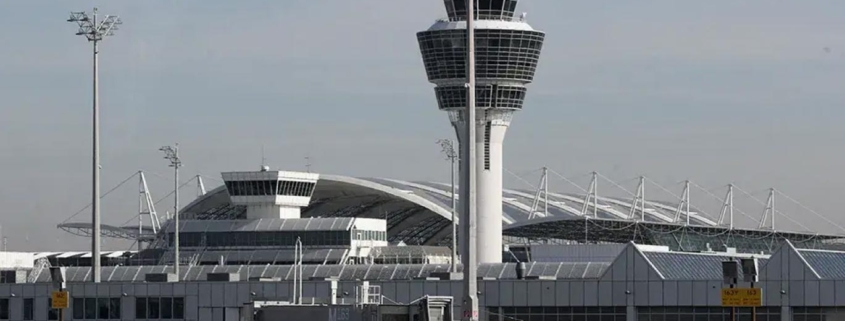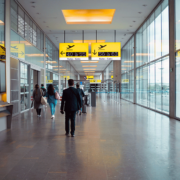Drones Paralyze Munich Airport: Why They Pose a Serious Threat to Aviation Safety
Munich Airport (MUC), one of Europe’s busiest hubs, completely suspended operations on the night of Thursday, October 2, after unauthorized drones were sighted near its runways.
The shutdown, which began at 10:18 p.m. local time, led to 17 canceled flights, 15 diversions to airports such as Stuttgart, Nuremberg, Vienna, and Frankfurt, and affected over 3,000 passengers.
Operations began returning to normal in the early hours of Friday, October 3, with a flight to Varna (Bulgaria) being the first to depart after hours of uncertainty.
What Exactly Happened in Munich?
According to airport sources cited by Europa Press, the suspension was a preventive measure aimed at ensuring the safety of passengers and aircraft.
Authorities immediately activated coordination protocols between air traffic control, the federal police, and state security forces, responsible for detecting and neutralizing the devices.
So far, the exact number of drones involved has not been confirmed, nor have their operators been identified. German police are currently investigating the incident.
Why Are Drones Dangerous for Airports?
The Munich incident once again highlights an increasingly common risk in modern aviation: drone interference in controlled airspace.
Though small in size, these devices can endanger hundreds of lives.
1. Risk of Direct Collision
During takeoff or landing, aircraft operate at low altitude and reduced speed—the same ranges where drones typically fly.
A collision could cause severe structural damage or even engine failure, threatening the integrity of the flight.
2. Interference with Navigation and Communication Systems
Some commercial or modified drones can emit electromagnetic signals that interfere with aircraft navigation instruments or air traffic control, creating confusion during critical maneuvers.
3. Operational Chain Reaction
Even a brief airport closure can trigger widespread delays and diversions across the entire air network, affecting international connections and thousands of passengers.
4. Challenges in Detection and Response
Unlike traditional aircraft, drones are small, fast, and difficult to detect by radar, limiting authorities’ response time before a potential incident occurs.
A Growing Challenge for Aviation Safety
The Munich event adds to a growing list of airports worldwide that have been disrupted by drone sightings.
The proliferation and low cost of drones have increased their recreational and commercial use—but also their potential misuse in restricted areas.
International airports are investing in anti-drone technologies, including low-frequency radars, radiofrequency detection systems, and interceptor drones.
Still, regulation and coordinated response remain a global challenge.
Drones: Friends or Foes?
The temporary shutdown of Munich Airport proves that the drone threat is not hypothetical—it’s real.
A single unauthorized device can paralyze an entire airport and compromise the operational safety of civil aviation.
While authorities continue developing detection and neutralization measures, the incident sends a clear message:
Safe coexistence between drones and aircraft requires strict regulation, public awareness, and advanced defense technology to truly work.
What do you think?
Follow our blog for more updates on aviation safety, technological innovation, and airport management.









